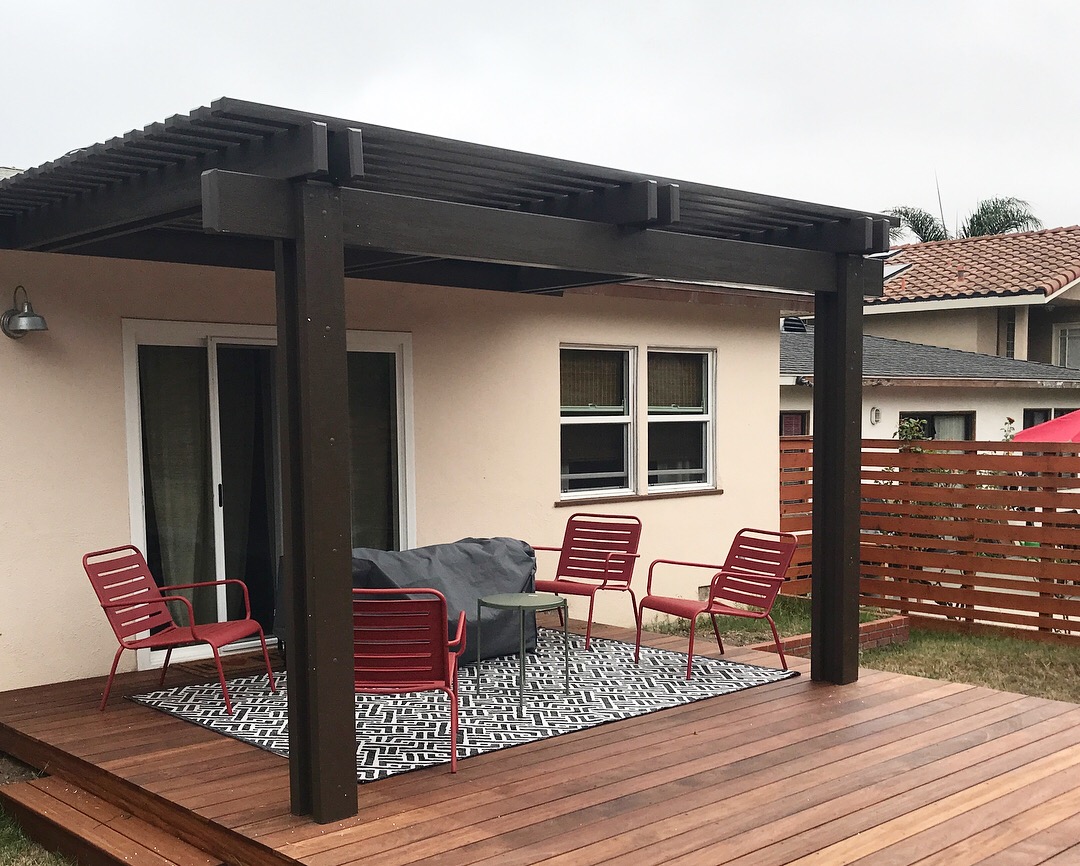The word “pergola” came down to us from the late Latin “pergula,” and to Spanish as “la pérgola,” and all three refer to the same thing. A pergola was a great thing in Roman times and is today, too. Useful, versatile, economical, sturdy, and when adequately styled and accessorized, very easy on the eyes.
The essentials of a pergola are vertical posts or pillars, supporting horizontal crossbeams. The pillars can be sunk into the ground, anchored to a concrete slab or a deck, or just rest on the surface. A pergola can be an extension of a house or outbuilding or a free-standing structure.
With this basic framework in place, the aesthetic and functional potential of a pergola is limited only by the homeowner’s imagination and ambitions.
Southern California averages only 36 rainy days per year, so shade is perhaps the most common duty of a pergola. They don’t generally have permanent roofs, though retractable fabric covers are a favorite accessory. The crossbeams provide partial shade from the overhead sun, and the number and width of these is a design variable with direct impact on shade. Fixed screens of fabric, bamboo or other materials are indeed an option, though many homeowners feel that these detract from the airy, minimalist concept of a pergola.
Live foliage is a fantastic shading solution. Climbing vines provide an airy canopy when trained over the crossbeams, and climbing flowers offer a fragrant sun shield. A pergola, after all, is not a room addition to the house, or an outbuilding. Of the many purposes, one can serve, hermetic insulation from the outdoors is not one of them!
Utility is another strong suit of a pergola. Trellises can be added to support flora. Useful and beautiful things can be hung from the pillars and crossbeams: shelves, hooks, mirrors, utensils, tools, among other things. If a hot tub or spa is already installed or is being contemplated, it’ll find a very happy home under a pergola.
A pergola installation relatively economical and yields lots of bang for the buck. The bottom line depends on size, materials, design, siting, upgrades, and so on, but as a benchmark, a 10×10 cedar project can usually be professionally done for under $4,000. According to a current Los Angeles County Public Works web page, a pergola that size doesn’t even require a permit – though any gas or electric lines run to it would. It’s a pretty quick job, too. It’s like the question is not “why a pergola?”, but “why not?”

